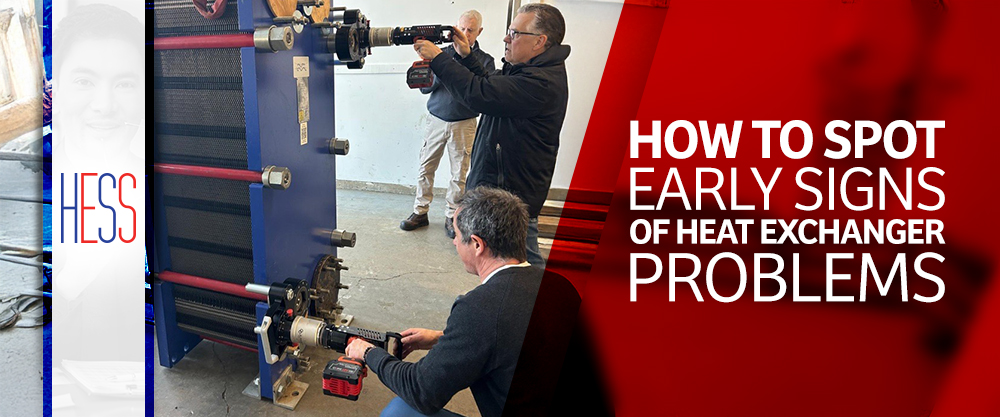News

How to Spot Early Signs of Heat Exchanger Problems
Most heat exchanger failures don’t happen overnight — they send you warning signs first. The trick is knowing how to recognize them before they turn into costly shutdowns.
Temperature Changes That Don’t Add Up If your output temperature isn’t matching what your process requires — even after adjusting controls — it could be a sign of fouling, scaling, or internal leaks. Don’t ignore it; small variances can become major inefficiencies fast. Unusual Pressure Drops A sudden drop (or increase) in pressure across the unit often points to blockages or damage inside the tubes or plates. Pressure gauges don’t lie — if they’re telling you something’s wrong, believe them. Strange Noises or Vibration Heat exchangers are designed to run quietly. Clanking, rattling, or unusual vibrations could signal loose parts, flow issues, or even cavitation. Leaks — Even the Small Ones A few drops on the floor might not seem like a big deal, but minor leaks can lead to corrosion, contamination, and bigger failures down the road. Visual Clues Rust, discoloration, or buildup on external surfaces are all red flags. A quick inspection with a flashlight can often catch these before they escalate. Bottom line: Staying alert to these early signs can save you from unplanned downtime and expensive repairs. The sooner you act, the easier (and cheaper) the fix will be. 📞 Need a professional inspection? Heartland Exchanger Solutions is here to help — from quick diagnostics to full refurbishments.

